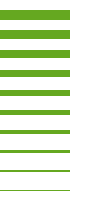https://doi.io-warnemuende.de/10.12754/msr-2020-0115
doi:10.12754/msr-2020-0115
© Author(s) 2020. This work is distributed
under

Dieses Werk ist lizenziert unter einer Creative Commons Namensnennung - Nicht kommerziell - Keine Bearbeitungen 4.0 International Lizenz.
Biological assessment of the Baltic Sea 2019
Abstract. In 2019, a total of 150 phytoplankton species were recorded on the 5 annual monitoring cruises reported here, marking high species diversity comparable to previous years. The phytoplankton production cycle was characterized by an early onset of the spring bloom and higher phytoplankton biomass than measured in 2018, particularly in the southern Baltic Sea areas. The 2019 spring bloom was dominated by diatoms particularly in the south. Shares of dinoflagellates and Mesodinium rubrum increased towards the Gotland Basin. By May the 2019 the spring bloom had already declined. The summer phytoplankton community consisted mainly of dinoflagellates and diazotrophic cyanobacteria in all investigated sea areas. A bloom of toxin producing Alexandrium pseudogonyaulax dominated the community of the central Arkona basin in July/August with highest abundances so far reported from northern European waters. High cyanobacteria biomass shares were mainly detected in the Bornholm and Gotland basins. The phytoplankton growth period extended well into the autumn: a third biomass peak nearly equalling spring bloom biomass levels was found in October in the southern sea areas, made by diatoms of the genera Rhizosolenia, Proboscia and Cerataulina. The 2019 phytoplankton sedimentation pattern reflected the growth dynamics of phytoplankton relatively well. A diatom dominated sedimentation peak in spring was followed by high shares of cyanobacteria in late summer and autumn. Data on elemental ratios and fluxes mirrored the main phytoplankton production phases and bloom events in Arkona basin: the spring bloom, a summer dinoflagellate bloom and subsequent cyanobacterial N fixation as well as the autumn diatom bloom. A total of 50 species was identified in the zooplankton in 2019 and mark a medium diversity. The zooplankton was characterized by an early seasonal development and was mainly dominated by the Copepoda and the Copelata. Rotifera and Cladocera were only of minor importance 2019. They can be very abundant during spring and summer, respectively, but were restricted to the occurrence of moderate concentrations of the cladoceran Bosmina spp. to the eastern Arkona Basin. In spring high concentrations of the copepod Acartia were found in all areas. In the Kiel Bight and Bay of Mecklenburg Acartia bifilosa was dominating, while in the Arkona Basin, A. longiremis was the major species. The spring and summer concentrations of the zooplankton remained below the long term average, particularly for Rotifera and Cladocera which had a maximum stock size of 2% and 40% of the long-term average, respectively. In general, the stock size of zooplankton has remained on a very low level since 2010 compared to the preceding decade. The 129 species found in the macrozoobenthos in 2019 mark a medium diversity. The species number found at the 8 monitoring stations ranged between 20 and 88. The oxygen supply in bottom waters in the current year was always higher than 2 ml/l at all stations, basically no oxygen depletion was observed. After a dramatically decrease of diversity and abundance in the Fehmarnbelt area in 2018, a complete recovering was observed in 2019. Also at the other stations the diversity was increased comparing to the last year. Depending on the region, the abundances ranged from 717 to 6.650 ind./m², and the biomass (ash free dry weight) from 0.6 g/m² to 5 56.7 g/m². Fourteen species of the German Red List (Categories 1, 2, 3 and G) were observed at the 8 monitoring stations. With six, the number of invasive species in 2019 was low. Rangia cuneata, a bivalve species originally from North America and observed at the monitoring station in the Pomeranian Bay in 2018 for the first time, was recorded again.
